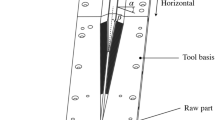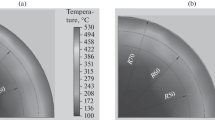The widespread industrial use of cupola-type shaft furnaces requires controlling their gas-dynamic and thermal behavior. When a cupola operates with an open top, its thermal regime is characterized mainly by the peripheral flow of gases with a significant difference in the ratio of the heat capacity of gas flows to material thermal capacity. The use of forced removal of exhaust gases from the shaft furnace contributes to an earlier transition from a peripheral to a predominantly central gas flow mechanism. By increasing the degree of rarefaction at the furnace top to 0.71 – 0.73 bar, it is possible to increase the melt temperature, pressure in the furnace cavity, temperature and air blast flow, as well as exhaust gas temperature while improving the conditions of heat transfer between gases and heated materials. A continuous decrease in the productivity of the unit accompanies this process, while the melting process stability improves. A further increase in the degree of rarefaction at the top contributes to a gradual transition from the peripheral to the central gas flow mechanism with a deterioration in cupola melting performance.



Similar content being viewed by others
References
V. I. Matyukhin and A. V. Matyukhina, Calculation and Design of a Cupola Complex for Cast Iron Smelting: Study Guide, Ural Branch of the Russian Academy of Sciences, Yekaterinburg (2014).
General Safety rules for Metallurgical and Coke-Chemical Enterprises and Production Facilities. SR 11-493–02, State Unitary Enterprise of Gosgortekhnadzor of Russia, Moscow (2002).
Yu. S. Sukharchuk and A. K. Yudkin, Cast Iron Melting in Cupola Furnaces, Mashinostroenie, Moscow (1989).
Yu. G. Yaroshenko, V. S. Shvidkiy, N. A. Spirin, et al., Thermophysical Foundations of the Thermal Operation of Metallurgical Grate-Fire Furnaces and Units: Study Guide, AMK “Den’ RA,” Yekaterinburg (2019).
Author information
Authors and Affiliations
Corresponding author
Additional information
Translated from Novye Ogneupory, No. 6, pp. 8 – 12, June, 2023
Rights and permissions
Springer Nature or its licensor (e.g. a society or other partner) holds exclusive rights to this article under a publishing agreement with the author(s) or other rightsholder(s); author self-archiving of the accepted manuscript version of this article is solely governed by the terms of such publishing agreement and applicable law.
About this article
Cite this article
Matyukhin, V.I., Matyukhina, A.V. Change of the Mineral Wool Cupola Operating Conditions During the Transition from the Open Gas Flow Mechanism to the Closed One. Refract Ind Ceram 64, 251–255 (2023). https://doi.org/10.1007/s11148-024-00834-4
Received:
Published:
Issue Date:
DOI: https://doi.org/10.1007/s11148-024-00834-4




